It is hard to resist Charleston’s charm, so we didn’t even try. Be warned – This is a long blog post. I don’t want to forget any of this visit to one of my favorite cities of all time.
In 2013 we stayed at the Charleston City Dock on the Ashley River, known as the “mega dock” for 2 nights – very expensive! (Our 2013 visit – Charleston Charm) This time we tried the other side of the peninsula at the less expensive Charleston Maritime Center in the Cooper River. The current is always an issue when docking here in Charleston, so we waited in the anchorage for slack tide, around 10:15 am.
Charleston is a busy harbor, with cruise ships, tankers, barges, fishing boats, tour boats, and pleasure crafts of all kinds. The Maritime Center is close to the cruise ship docks and the Port Authority.


The Maritime Center is a good choice for staying in Charleston, primarily because of its price (especially when compared to the “mega dock”), its location (most of Charleston is within walking distance), its friendly staff, and the free laundry (that’s important to cruisers.) But, you have to put up with huge wakes from the river that will rock and roll your boat even while at the dock, and the busy sounds and sights of the Port Authority and the tour boats.
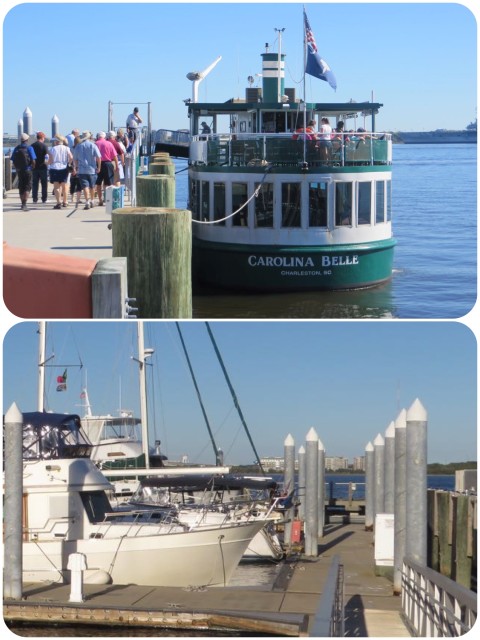
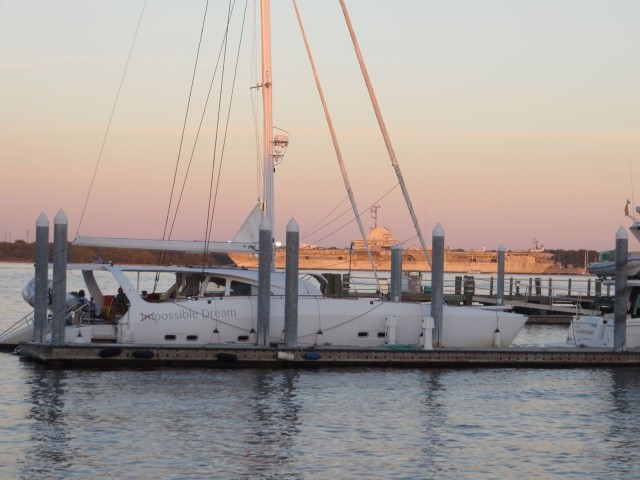
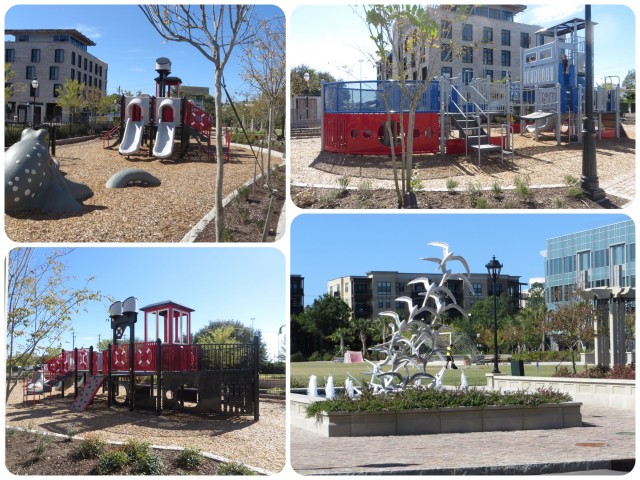
We passed a strange old partial structure every time we took the back streets to the market or into the downtown region. It sits there in the middle of the Port Authority region. It bothered me that I did not know what it was, just sitting there surrounded by an industrial site. Google is so useful, isn’t it?? 😉
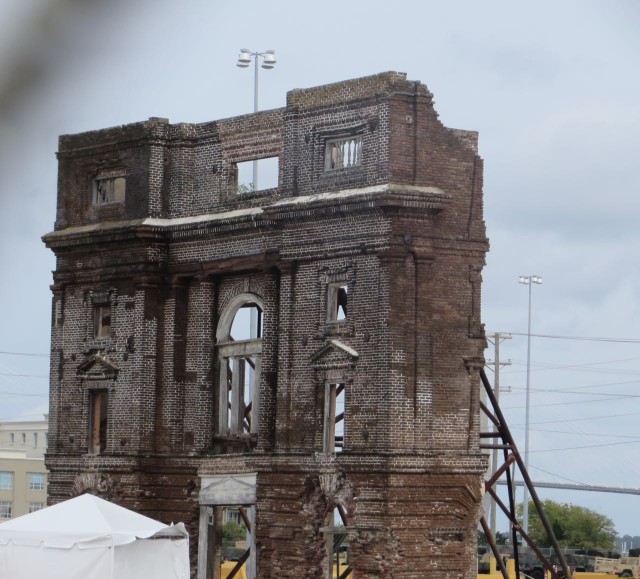
Our first walk was to the City Market. Established in the 1790s, the market stretches for four city blocks. The entire market is a series of sheds with breaks at intersections and has been listed on the National Register of Historic Places. In the 1800s, the market provided a convenient place for farms and plantations to sell their products and as a place for locals to gather and socialize. Today the City Market’s vendors sell souvenirs and other items ranging from jewelry, spices and southern treats, clothing to Gullah sweetgrass baskets.
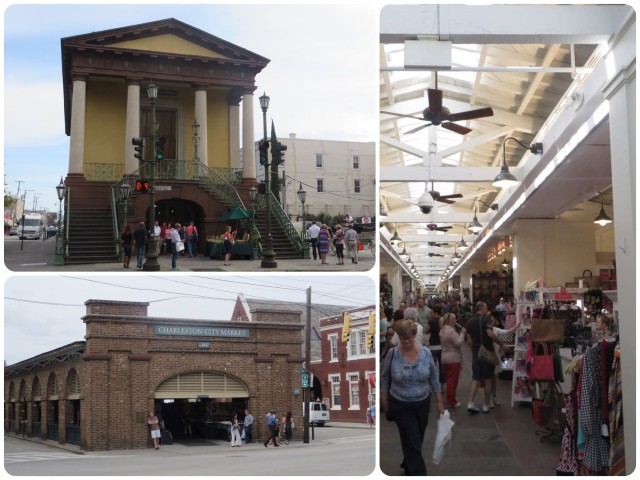
I had to buy another sweetgrass basket, or “low country coil basket.” I have a small one from the last trip and thought a slightly larger one would be nice for fruit or bread. They are pricey, but it is a souvenier that has culture and history behind it. Supposedly, the value of these baskets increases with age and they will last forever. I don’t really care about that, if it is even true. The most important thing to me is that it will remind me of our visit to Charleston and South Carolina.
On one of our walks, we passed a lovely white church, and then recognized it as the Charleston church where 9 people were killed in June during a mid-week prayer meeting. The oldest African Methodist Episcopal Church in the south, the Emanuel African Methodist Episcopal Church has always stood for freedom and civil rights. Founded in 1816 by blacks fleeing racism, it’s services were conducted in secret for many years. and was a part of the Underground Railroad. The congregation played a major role in anti-slavery movement, the Underground Railroad, and was burned down after a thwarted slave rebellion in 1822. Destroyed again by an earthquake in 1887 and rebuilt on its current site, the church has continued to be a focal point for the civil rights movement.
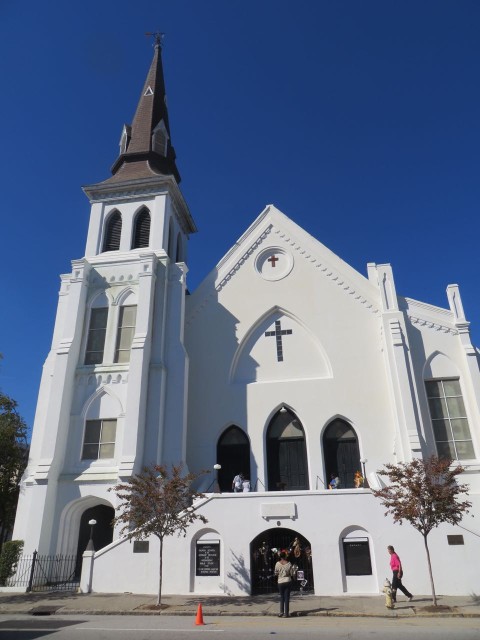
I signed us up for a culinary tour because Charleston is known for its food. My original plan was to do the “Downtown Tour” in the historic district, but that one wasn’t available, so I chose the Upper King Street tour. In the final analysis, this might have been good because we experienced a different Charleston than on our last visit. This “midtown” area had fallen on hard times by the 1970s. Few people would venture there after dark, Charleston natives and tourists. Over the past 15 years the neighborhood has been revitalized with galleries, boutiques, bustling restaurants and nightlife options. The renovations integrate new and old by utilizing reclaimed materials and architectural details with the new construction.
The Upper King Street Culinary Tour took us around the Cannonborough-Elliotborough neighborhood (King/Cannon/Rutledge Streets), a region that has emerged as an area showcasing culinary innovation, and numerous James Beard award winners and has been named one of the top 10 food neighborhoods in America.
Our tour guide, Guilds Hollowell, is a native son of South Carolina, fourth-generation. He certainly knew the history, the culture, the restaurants, and the secrets of Charleston. Here is a quick recap, in picture form, of our 2 ½ tour food and history tour —
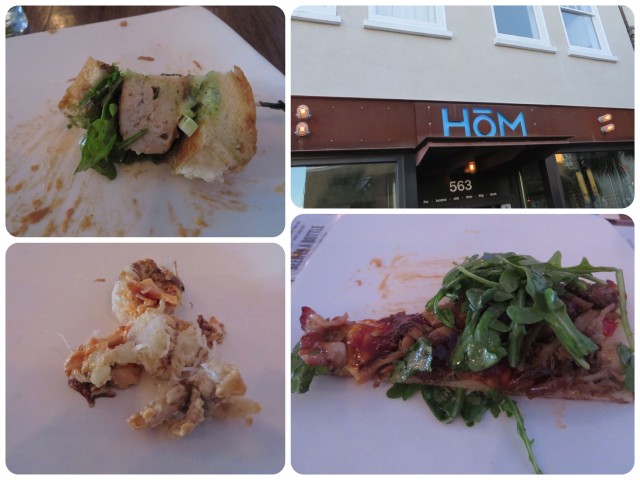
We had a turkey burger, calamari, and a delicious flatbread.
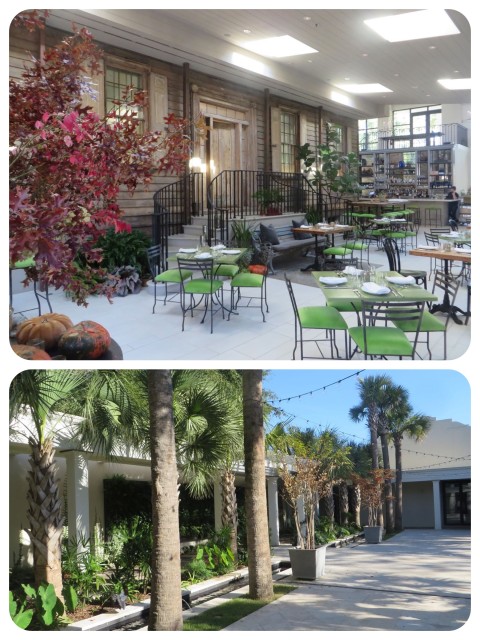
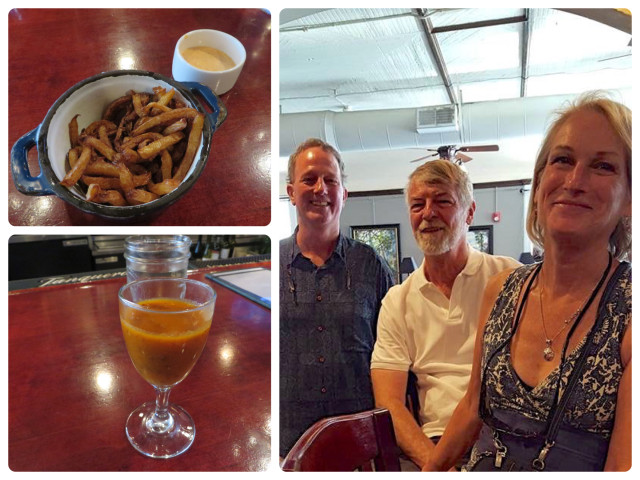

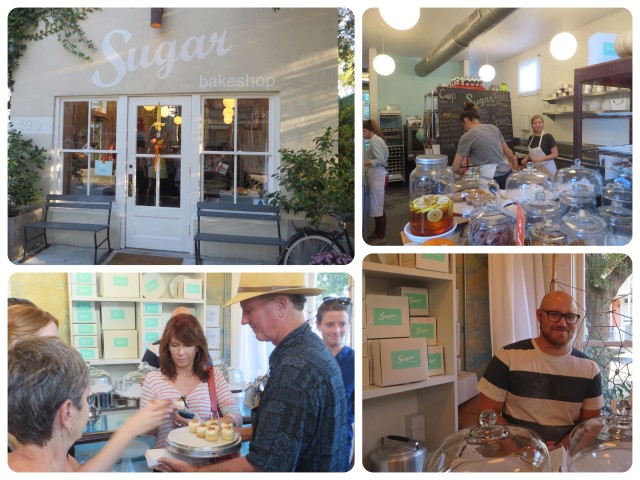


Saturday mornings are Farmers Market day in Marion Square. Annette and I spent the morning there while Al puttered in his engine room. I definitively had the better day! This was one of the best Farmers Markets I have ever seen – variety of local produce, plants, herbs and cut flowers, breakfast and lunch vendors, live entertainment and an assortment of juried arts and crafts from local artisans.
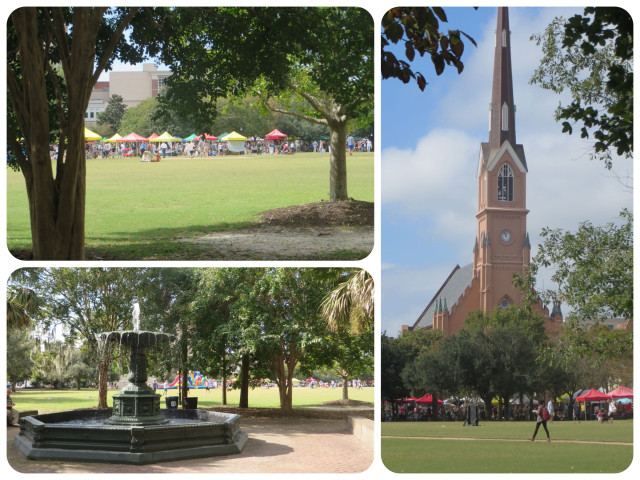
For our last day in Charleston, I could not resist the urge to revisit the historical downtown streets, so we took a walk which turned out to be a long walk, especially for me and my leg. But it was worth it!
I have always enjoyed looking at a region’s unique architecture, and Charleston is a feast for the eyes. There are architectural features in Charleston that are worth repeating and photographing again (to me, anyway.)
A strong earthquake hit Charleston in 1886, estimated to be 7.3 on today’s Richter scale and the most significant earthquake have occur in the southeastern U.S. Many of the city’s buildings were left in ruins or severely damaged. Without enough funds to rebuild everything, buildings were stabilized by running iron bars from one end of the structure to the other, with iron bolts fixing them in place on the face of the structure.
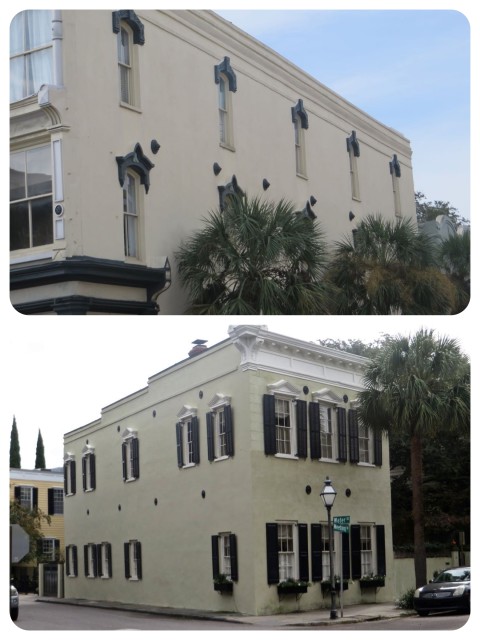
Throughout the city, you can see what is known as the “Charleston single-house” architectural style. Wide piazzas (Charlestonese for porch) are built on the side of the house facing the prevailing winds. The houses are only one room wide, but that could be a 10 ft – 25 ft wide room, so that all rooms in the house have the advantage of the sea breeze. The home could be many rooms long and many stories high. The narrowest side of the house faced the street. This style was built throughout the 1700s and 1800s. Supposedly, at its peak, there were 4,000 Charleston single houses in existence. Today there are estimated to be around 2,700.
My favorite story about the Charleston Single house is the front door to the piazza/porch on the side. Known as hospitality doors, these portals were a way of communicating with friends and neighbors. Leaving the door open meant you were home and ready to receive guests – good old southern hospitality!
Charleston’s ironwork is another architectural treasure. I found a nice description of the ironwork’s history on a blog called, Charleston Past. “….Charleston’s love affair with the beauty of finely crafted wrought iron is evident. Charleston’s affinity for decorative wrought iron came about early in the history of the city. In 1772, a wrought iron communion rail was imported from England and installed in St. Michael’s Episcopal Church. Blacksmiths, who had made a career of providing nails, horseshoes, and wagon wheels to the growing city, now began to expand their craft to include patterns and scrollwork. The earliest designs were taken from British pattern books, but it didn’t take long for the ironwork of Charleston to develop its own style. Unfortunately, much of the earliest ironwork did not survive the multitude of fires and natural disasters that plagued those early inhabitants.”
From gates to rail to balconies to windows, and fences —
Many of the homes have private courtyards with gardens that are just lovely. Like a secret garden, except that people can peak through the ironwork gate and catch a glimpse. We did.

At the intersection of Meeting and Broad Streets, stands the “Four Corners of Law”, named such because the four buildings represent federal, state, municipal and canon law.
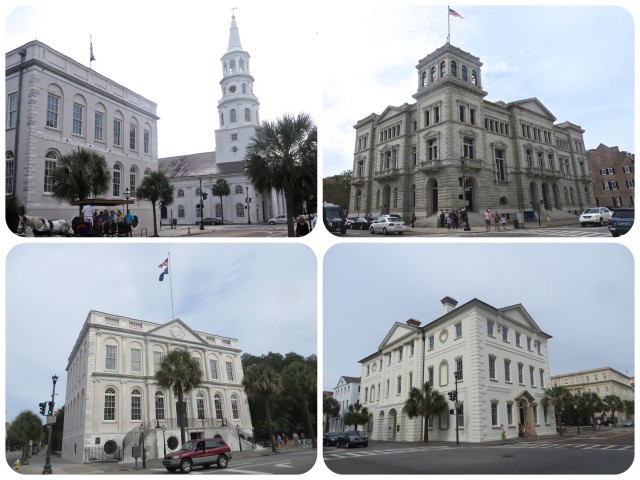
Southeast corner – St. Michael’s Episcopal Church, constructed between 1752 and 1761
Northeast corner – Charleston City Hall, constructed between 1800 and 1804.
Northwest corner – Charleston County Courthouse, originally constructed in 1753, rebuilt in 1792 for use as a courthouse.
It was a long walk down to the Battery, the fortified seawall at the very tip of the Charleston Peninsula, originally used to help defend the city from Union attack during the Civil War. It is now a public promenade with a great view out over the water. We enjoyed the view and rested for a while in White Point Gardens.
Walking north from the Battery are the beautiful historic antebellum homes on East Bay Street. Although these are also in the Charleston Single House style, they don’t seem to make use of the open/closed door to the piazza to invite folks inside. Although the basic concept of the Charleston Single House style is seen all over the city, I could see the differences in neighborhoods and “status.”
We continued our walk northward, passing “Rainbow Row.” This section on East Bay Street, built between the 1720’s-1790’s, was considered the ‘slum’ area of Charleston after the Civil War. It was renovated in the early 1900’s and given the Caribbean colors that are still seen today.
We sure needed sustenance after all that walking! I had been asking everyone I met, cruisers and Charlestonians, where I could find the best shrimp and grits. I really wanted to try it again, give it a second chance. The first time I tried shrimp and grits was less than outstanding. The name, “S.N.O.B. was mentioned over and over – “Slightly North of Broad.” The bartender assured me that their shrimp and grits was simply the best.
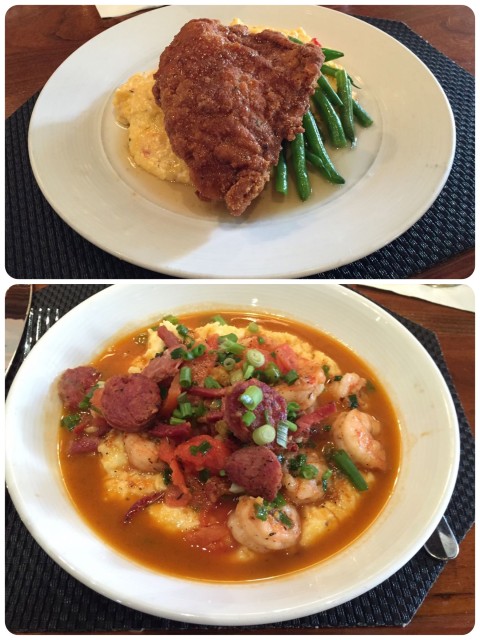
It might seem as though we ate our way through Charleston, but the walking makes that ok. What could be better? The food and streets of a beautiful city. Charleston can really capture your heart with its charm.
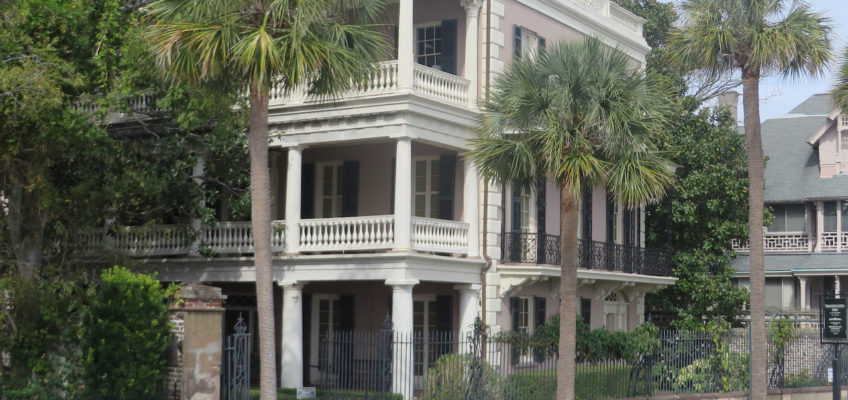
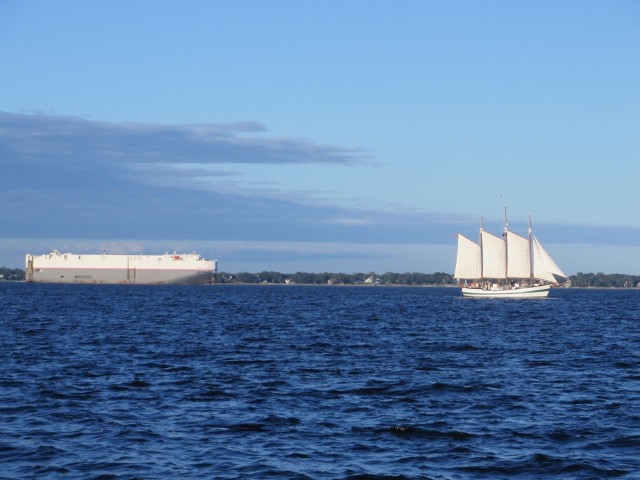

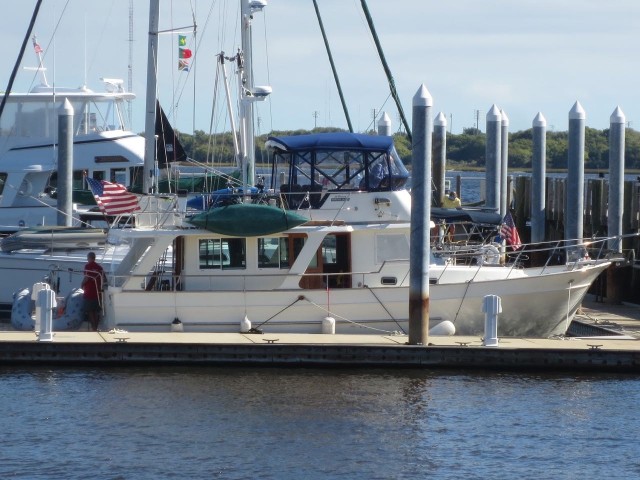
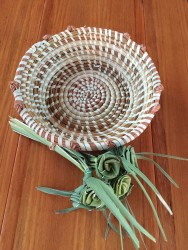
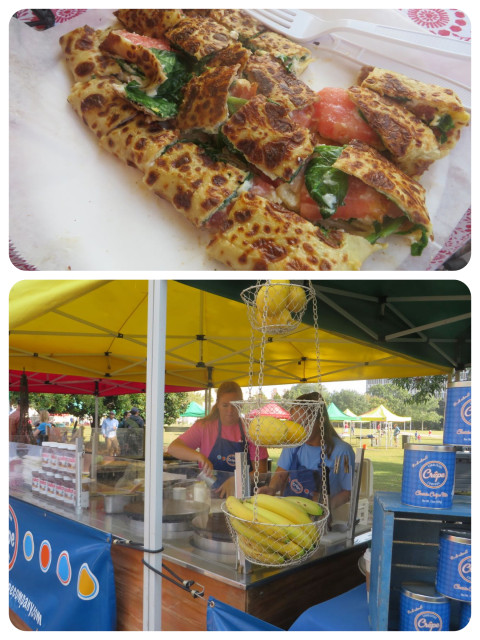
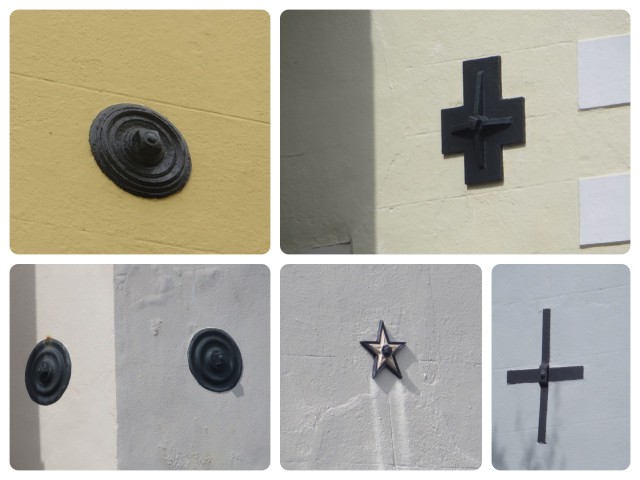
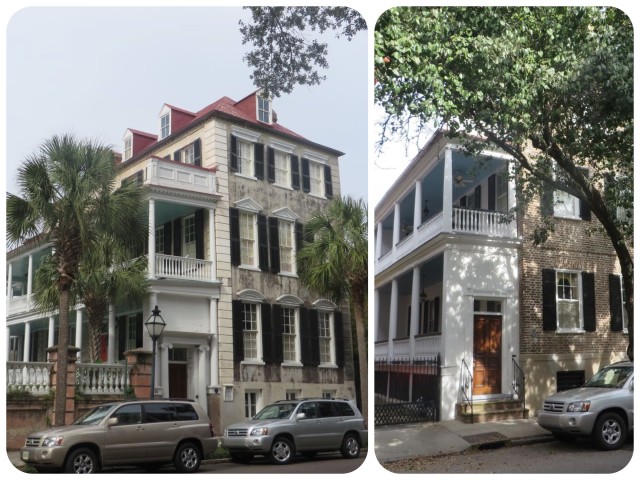
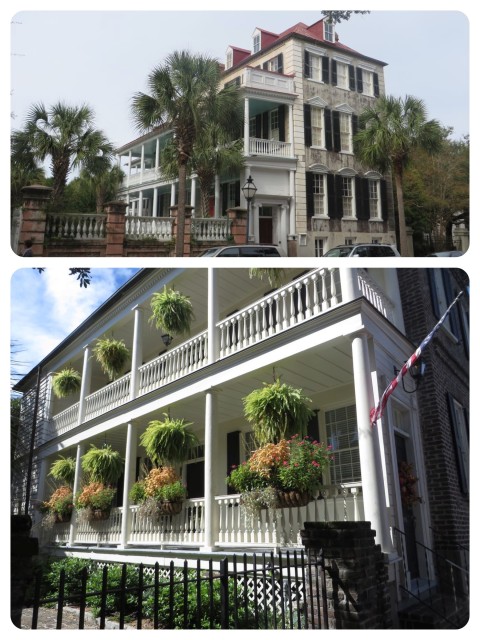
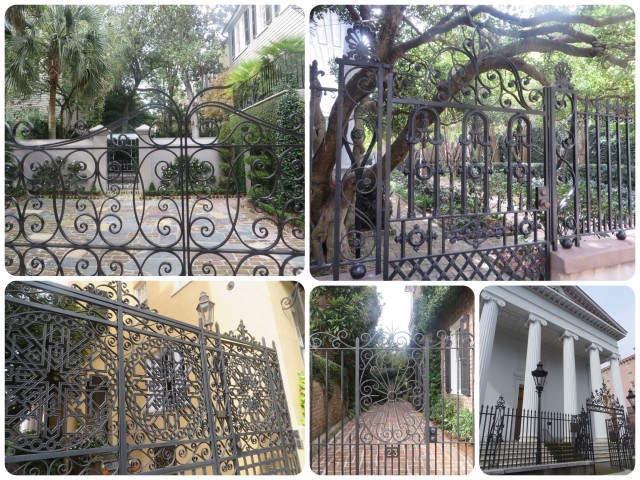
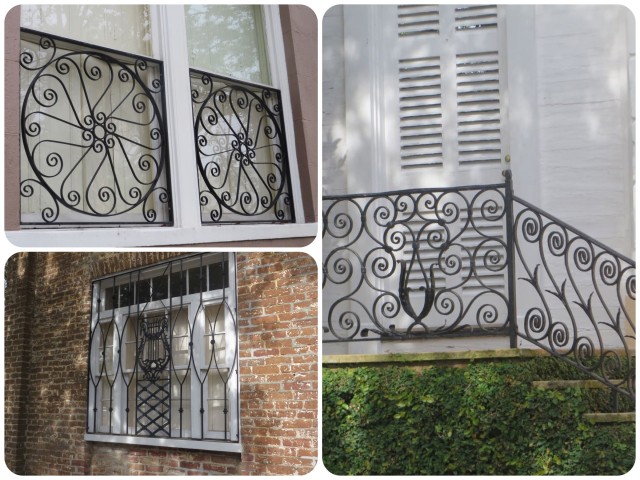


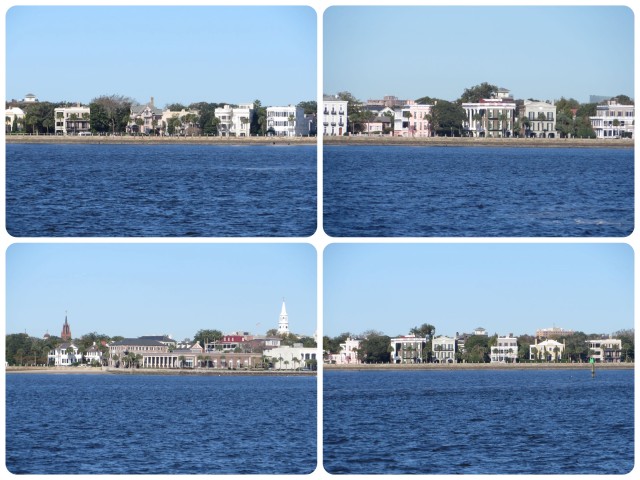
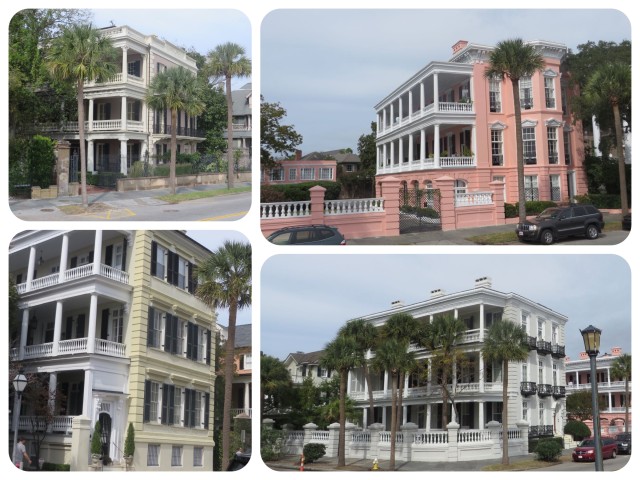
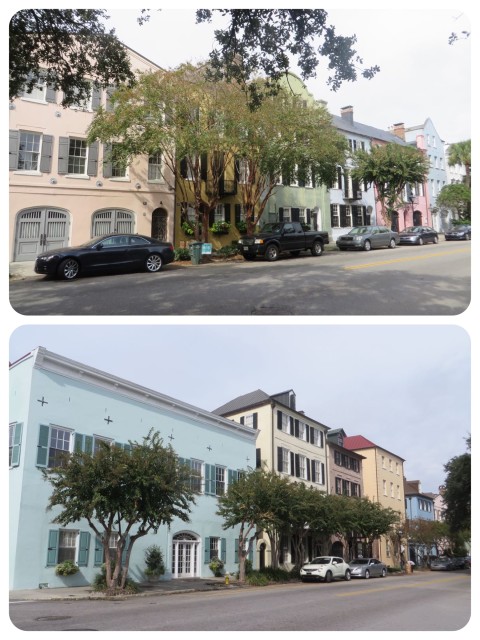
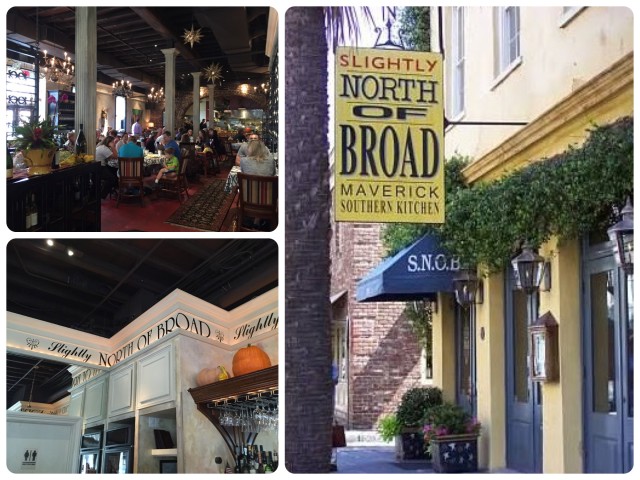

South Carolina’s Low Country – Kindred Spirit
[…] that’s quite obvious by my previous blogs – Charleston Charm in 2013 and Captivated by Charleston’ Charm Again in 2015. This stop would be a short one for visiting with friends, grocery shopping, laundry, […]